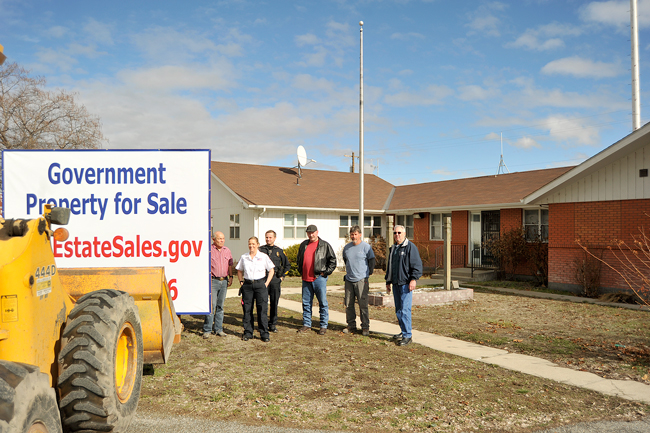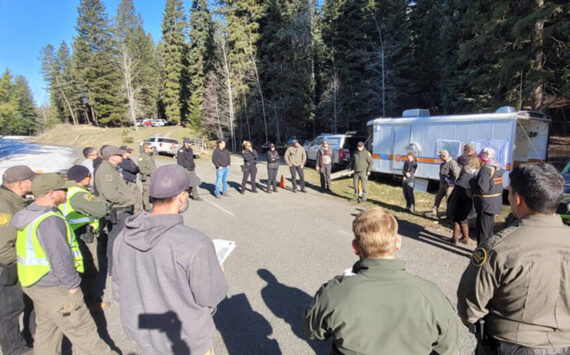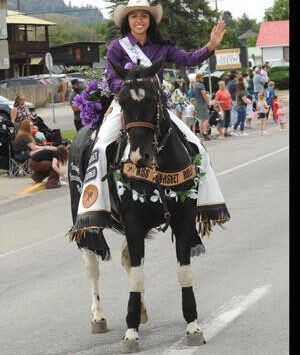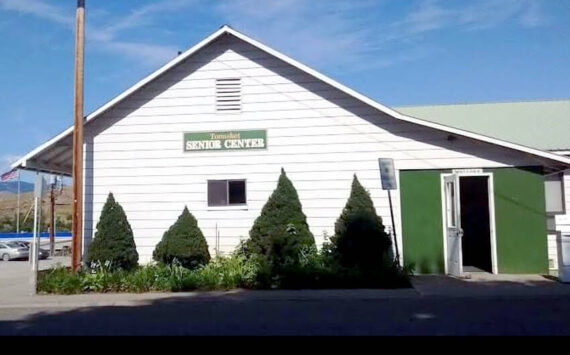
City takes possession of what was becoming an eyesore
It’s just a beautiful piece of property for the city to have and I think it will be beneficial to have the PD on Main Street. Oroville Police Chief Todd Hill.
OROVILLE – After thinking that the opportunity had slipped away, Oroville is now the proud owner of the old U.S. Border Patrol Station on Main Street.
The old building, which housed about 30 USBP Border Agents at one time, will most likely be the new home of the Oroville Police Department and the Community Development Director and Permit Administrator/Building Inspector.
The city was originally offered the building by the General Services Administration after the Border Patrol moved into their new $16 million complex just south of the boundary with Canada. However, the offer came with some strings attached – the city could only use it for law enforcement purposes. The city thought that was fine, but they wanted to move city hall there as well. The GSA wasn’t having that so the property went up for sale, a down payment was made by a Canadian investor and then it sat vacant for months and the buyer never completed the purchase.
“It seems he wanted to turn it into a hostel or a transient, pay by the hour accommodations. He was unaware of the permits he’d have to secure to do that,” said Chris Branch, director of Community Development.
So, the GSA gave the city one more chance to accept the property, at no charge.
“We were the winning bidder by default,” said Councilman Jon Neal.
Councilman Walt Hart, who has been pursuing the matter with the federal government, said, “They offered it to us again with the same strings attached as the original offer which means we have to use it for law enforcement.
This time, after discussing the potential property acquisition in a closed door executive session, the council came back to say they would accept the federal governments offer.
That’s why the mayor and members of the city council, as well as Branch and Police Chief Todd Hill, could be seen at the old USBP Station helping to take down the large government property sign. While they sort of eased the sign down with the help of Brad Calico from the city crew, City Superintendent Rod Noel took a front end loader and pulled the signs posts from the ground.
“At this point we have a building, as soon as we figure out funding will have some answers as to when we can move in,” said Mayor Chuck Spieth.

While the old station has some amenities that will transfer over well for the police department, it won’t be a turn key operation. The building has a four bay salley port, which will allow the Oroville Police to drive a prisoner into the garage area and keep the suspect secure while moving from the patrol car to one of the two holding cells already in the building. Chief Hill doesn’t see the need for the use of all four ports, so one area may become the exercise room and another may be used to house the city’s Number 3 ambulance out of the weather. The building has already been wired with lan lines for computers and telephone lines to the various offices. It has a secure entry and a tall radio mast on the roof.
“It’s going to take awhile to wire in the computers, communications and cameras,” said Chief Hill. “If we used the antenna mast as it is we’d have to modify our license with the FCC because that one reaches way into Canada. We will probably just use our old antenna mounted on the mast.”
The station also has a men’s and women’s locker rooms with showers, break room, conference area and a fenced parking area in back.
The Community Development director and Building Inspector will probably be located at the north end of the building, but a second front entrance and a wall will most likely need to be built to separate them from the police station, according to Hill.
“I’m excited it is very well set up for law enforcement… it was designed for a department of seven and we have five officers, so we really need to share because the utilities are expensive,” said Hill, who adds that much of the expense might be save by not heating the garage.
“It’s just a beautiful piece of property for the city to have and I think it will be beneficial to have the PD on Main Street,” said Hill, who said he would have been fine if the city had decided to use it for some other purpose.
When asked what will happen to the old police station on Ironwood Street, just south of City Hall. Hill said that was up to the city, but the jail would make a good secure place to store the city records which have been crowding out city hall and the council chambers. He said Superintendent Noel might move his office up into the old station, but no decisions had been made as of yet.
The mayor and council were particularly happy to take over the building which was becoming an eyesore on Main Street due to lack of outside maintenance. The lawn area at times was overgrown with weeds. Attempts to get the GSA to take care of the problem went unheeded and threats to write the government a ticket were apparently scoffed at, according to Hill.
City takes possession of what was becoming an eyesore








